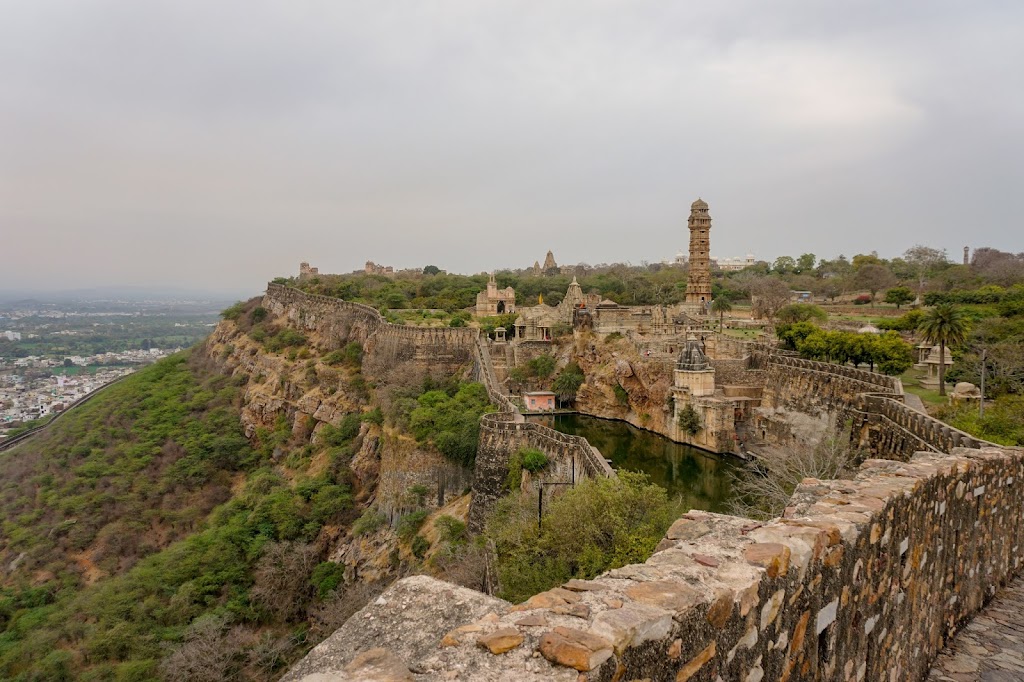After watching the exciting battle of two male leopards at Jawai Bandh, I started my journey to the land where humans fought numerous battles. The land of valor and sacrifice – Chittorgarh. The town is famous for the Chittor fort, the foundation of which was laid by Mauryan kings in the 7th century. Bappa Rawal, the founder of the Sisodia dynasty, received Chittor as a part of dowry from Solanki kings of Gujarat in the 8th century. Since then the descendants of Bappa Rawal ruled the region of Mewar from Chittor for several centuries. In 1030, Allauddin Khilji, the Sultan of Delhi, attacked Chittor with the desire of marrying Rani Padmini, whose beauty and charm was matchless. The events that unfolded thereafter have now become a legend foretelling the bravery and sacrifice of Rajputs. The fort sits on a 300 m high isolated rocky plateau that is seven miles long. Sheer cliffs on all sides and strong fortifications make the fort almost impregnable. Along with Kumbhalgarh and other hill forts, this fort is a UNESCO World Heritage Site. The total area of the fort is around 280 ha and it houses numerous palaces, temples, towers, and tanks. Being a history buff, I was quite excited to see these buildings.

After a tiring journey of 6 hours from Jawai Bandh to Chittorgarh, I finally reached hotel Pratap Palace. I checked in and spent the evening at leisure. The next day, I started my trip to the fort. A steep ghat road passing through various gates took me to the fort entrance called Ram Pol. As expected, a guy approached me as a guide. Considering that the fort is huge, I thought some guidance might be helpful. With his help, I started exploring the various monuments on the fort. The first was Vijaystambh – the victory tower. This eight storied tower is a symbol of Chittor. It was built by Rana Kumbha to commemorate his victory over Mahmud Shah Khalji in the year 1440. The tower has extensively carved interior and exterior, making it an architectural masterpiece. I went up to 3rd floor, but beyond this point, I felt claustrophobic as the stairs became extremely narrow and steep. I came down and clicked pictures from various angles. The carvings were truly mind blowing. Just besides the tower, was a small garden. According to my guide, this was the place were Jauhar (women sacrificing their lives to avoid falling in hands of the enemy) happened centuries ago. Today it looked like an ordinary garden. Thinking how it could have been in historic times just sent shivers down my body. I moved on to the Samadhishwar temple. This temple had a unique three-faced Shiva idol in the sanctum. The architecture was of the typical Nagara style. I went around clicking the pictures of the eloquent outer walls. Just behind the temple was Gaumukh Kund. This is a small tank that served as a water source for the inhabitants of the fort. The image of the Gaumukh Kund along with the surrounding monuments and temples has become an iconic image of Chittorgarh.
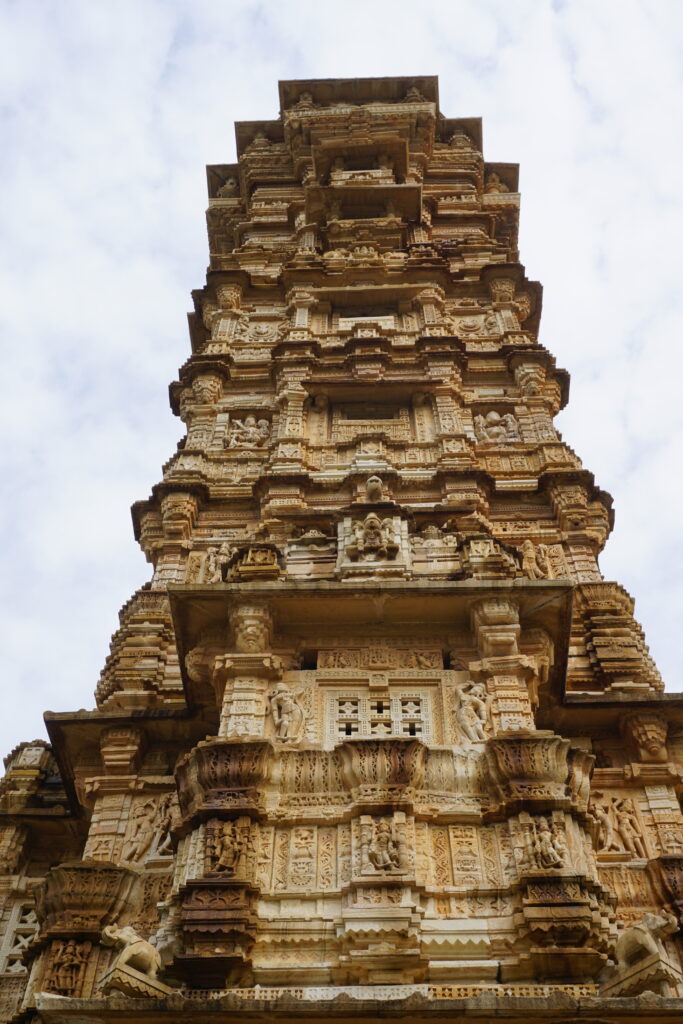
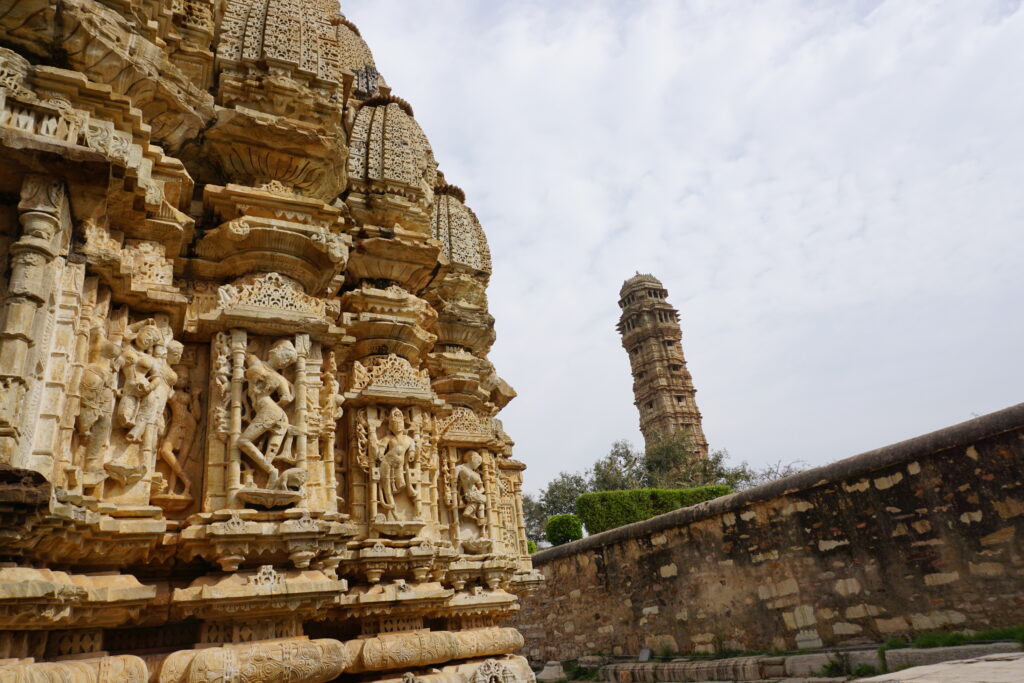
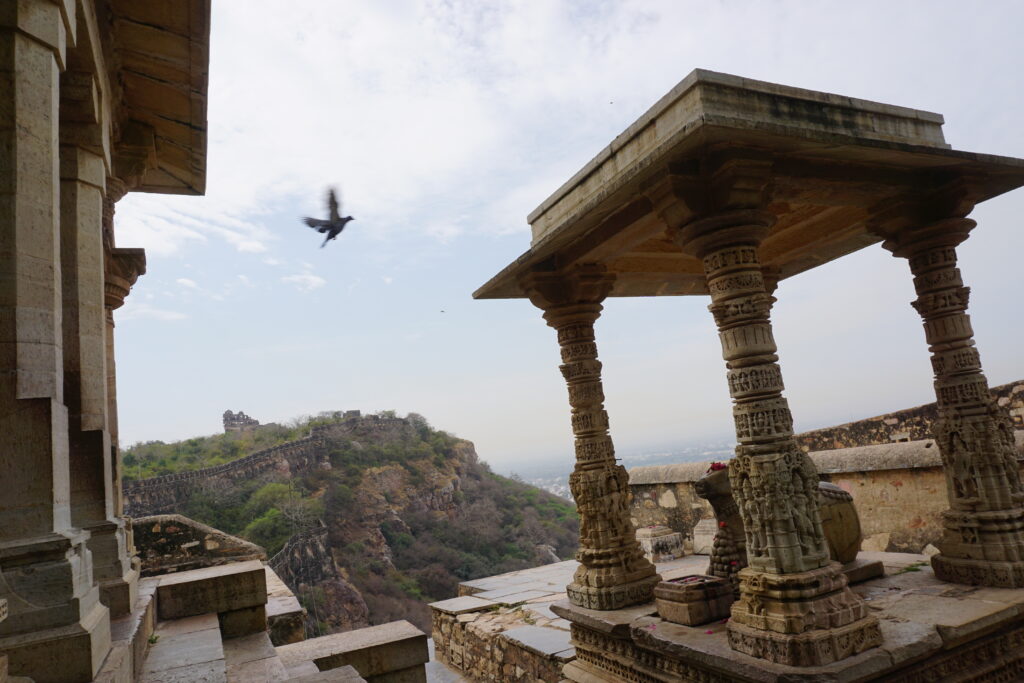
Our next stop was Padmini palace. This is a small palace situated in the middle of a pond where the queen Padmini was said to have lived. The main palace adjacent to the pond is now decorated with gardens. My guide narrated the entire story of Padmini and Khilji while standing at the palace. Quite an enthralling tale! Listening to it while being right at the palace was a different experience. From here, we moved to Suraj Pol. Pol means a gate. Suraj Pol used to be the main entrance of the fort. This majestic gate was now a deserted place. My guide described how in the medieval ages people use to deploy elephants to smash through the massive fort gate and how the fort entrance was designed to make such attacks difficult. I could connect this with the design style of forts in Maharashtra.
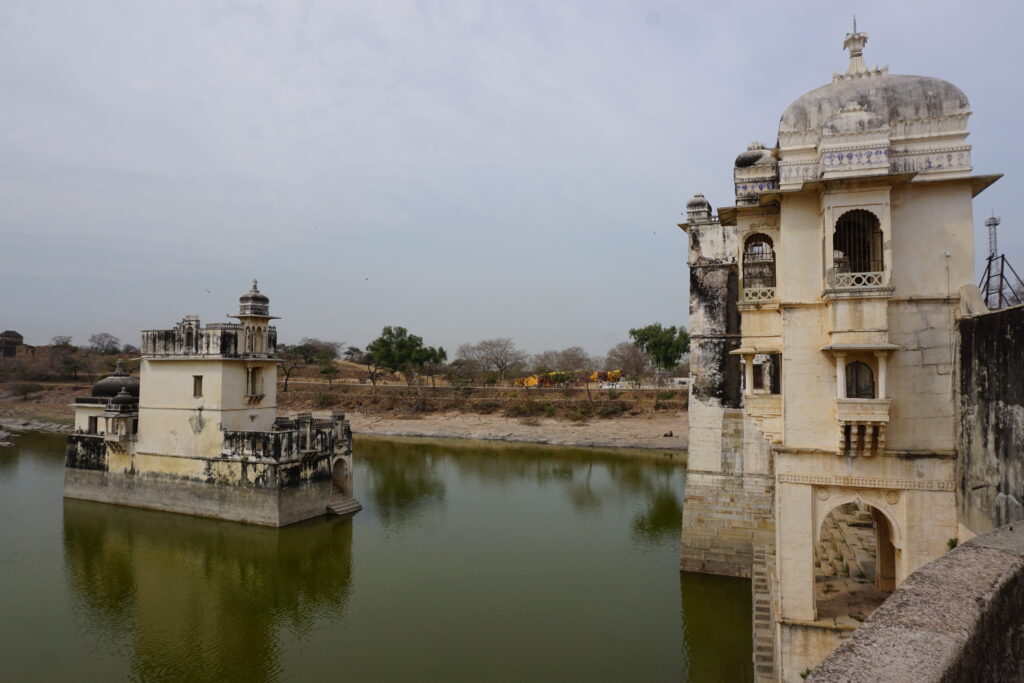
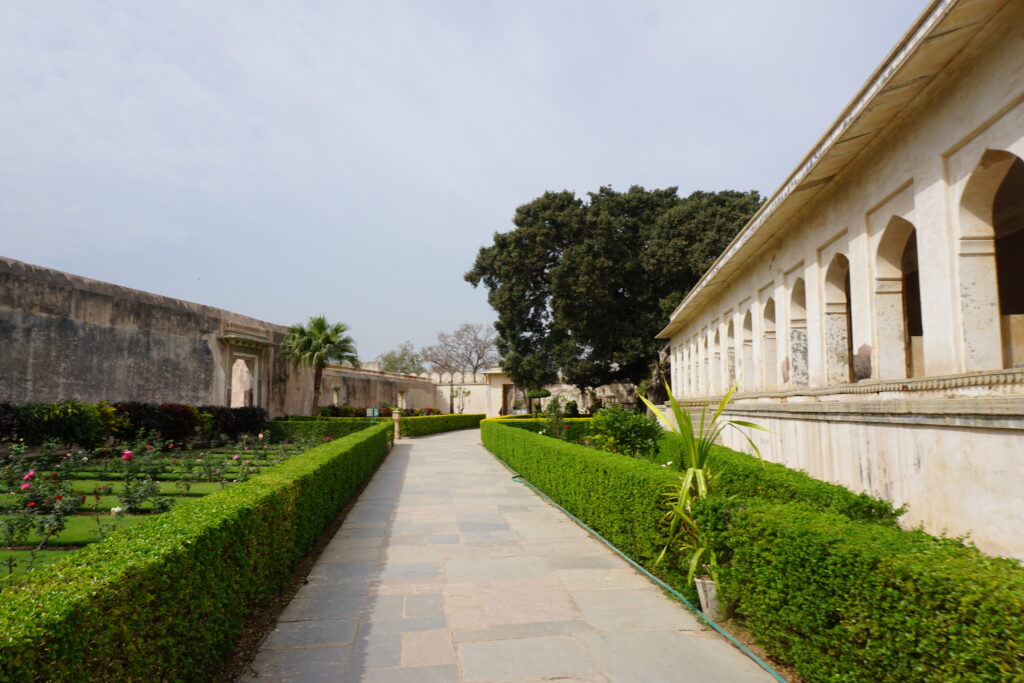
I clicked some pictures there and we went to Kirti Stambh. Unlike Vijaystambh, which signifies victory, this tower signifies the teachings of Jainism. It was built in the 12th century by a Jain merchant Jijaji Bhagerwala during the reign of Rawal Kumar Singh. The six storied tower is dedicated to Adinath and houses beautifully carved balconies and passages. The lower stories show images of Adinath, whereas the upper stories have numerous miniature images of Jain divinities. Next to the tower is a temple dedicated to the Digambara sect of Jainism. I spent some time here clicking pictures. The light was perfect and there was not much crowd. This was the last spot of my guided tour of the fort. I paid to the guide and returned to Ram Pol. The two-hour-long guided trip was a bit exhausting. It was nearing noon and I was hungry. I decided to go back to the town and have lunch. On the way to the hotel I spotted a cosy restaurant serving Rajasthani Thali. I had a sumptuous meal and came back to the hotel to take some rest.
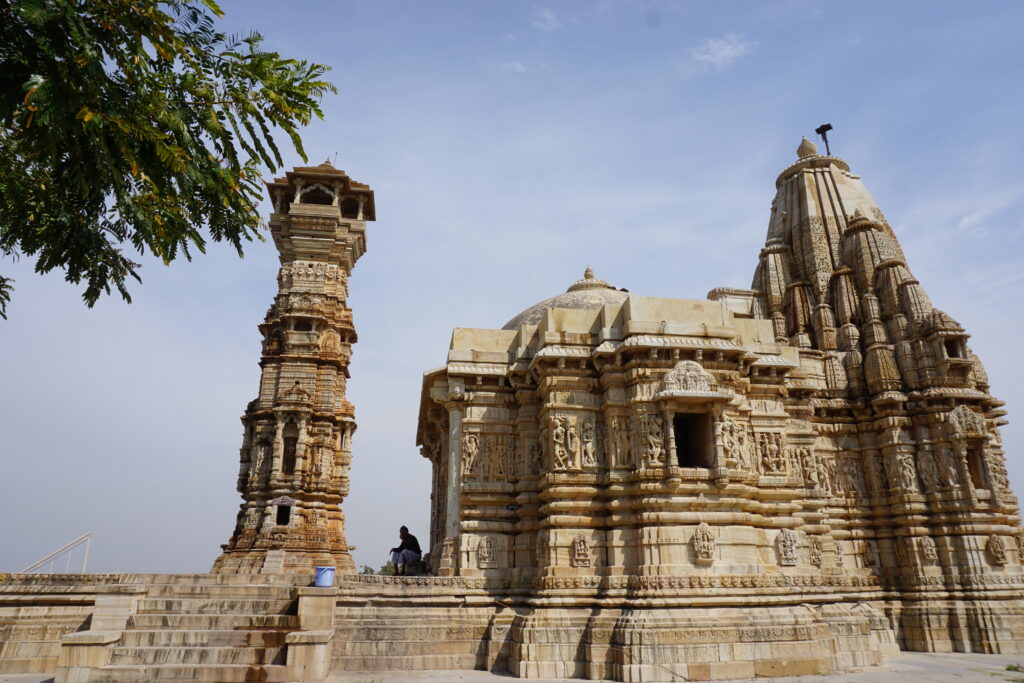
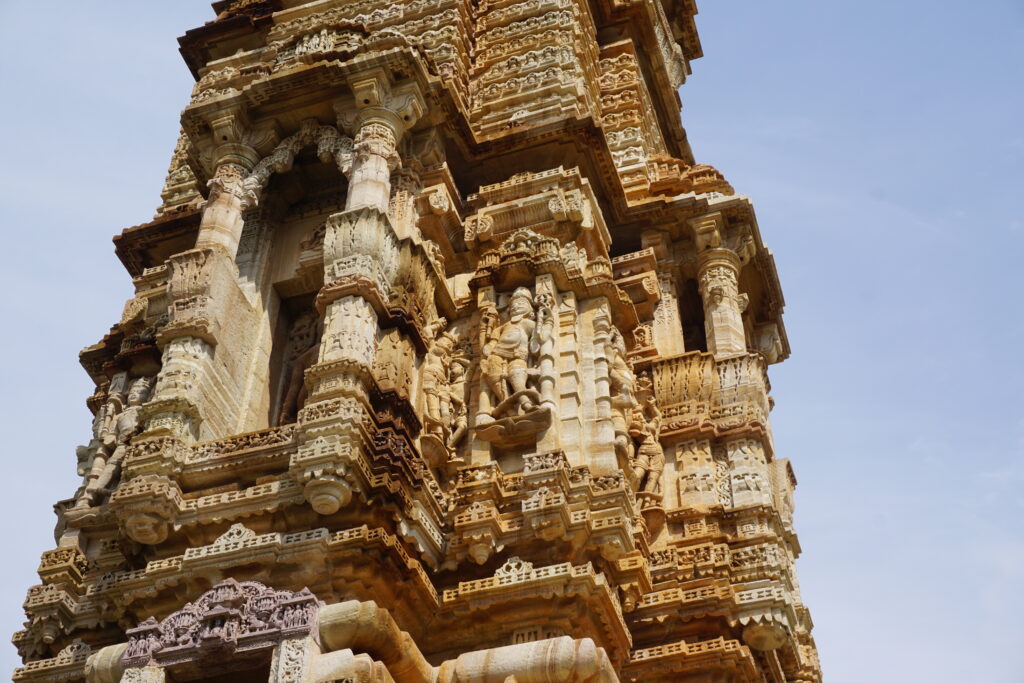
Around 3 PM, I went back to the fort to explore the remaining places. The fort is huge and the monuments are scattered throughout. However, as I had taken a guided trip in the morning, I had got some idea regarding the locations of various monuments on the fort. I went straight to the Fateh Prakash palace, which is now converted into a museum. The museum was about to close in half an hour. I hurriedly bought a ticket and went inside. The museum was much smaller than what I had expected. The galleries explaining the fort architecture and history of Mewar kingdom were quite impressive. From here, I went to Gaumukh Kund. Clicking some pictures in the evening sunlight was the motto. But alas, the weather was cloudy. Nonetheless, I spent some time exploring the area and went to Kumbha palace. This palace was a perfect place for ruins photography. The broken walls and dim lit passages appeared spooky. The cloudy evening and chilly breeze were uplifting the spooky mood of the palace. By now, dusk was approaching and the lights in the city were slowly lighting up. I was so engrossed in clicking pictures of the city lights that I almost missed the Light and Sound show. I quickly grabbed a ticket and went inside. The show beautifully narrated various historic events that happened on the fort. After the show, I had a light dinner and returned to the hotel.
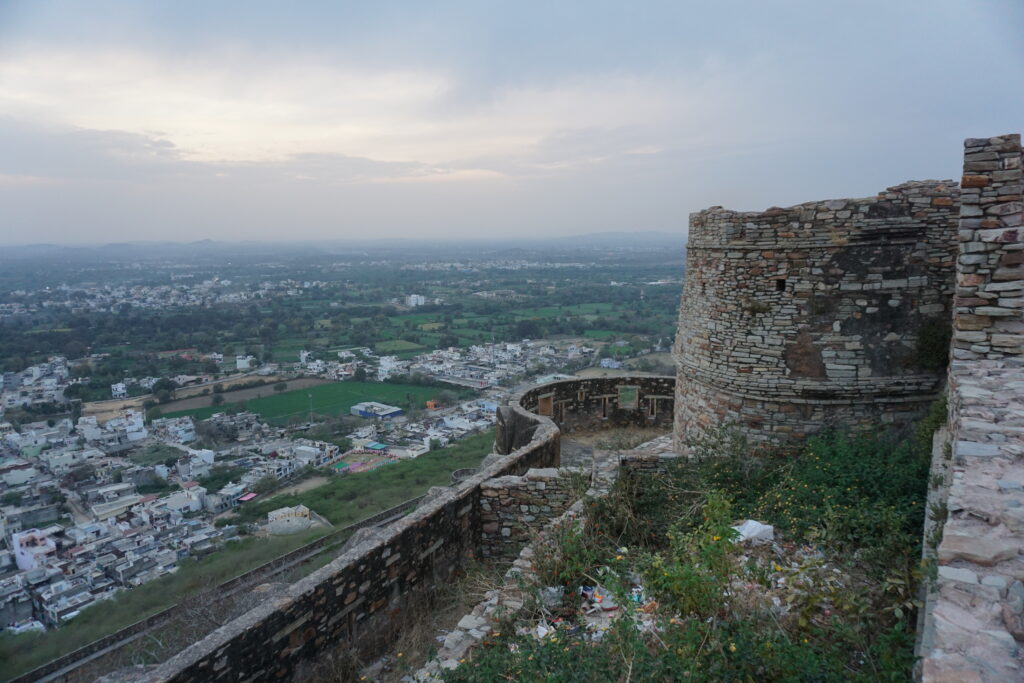
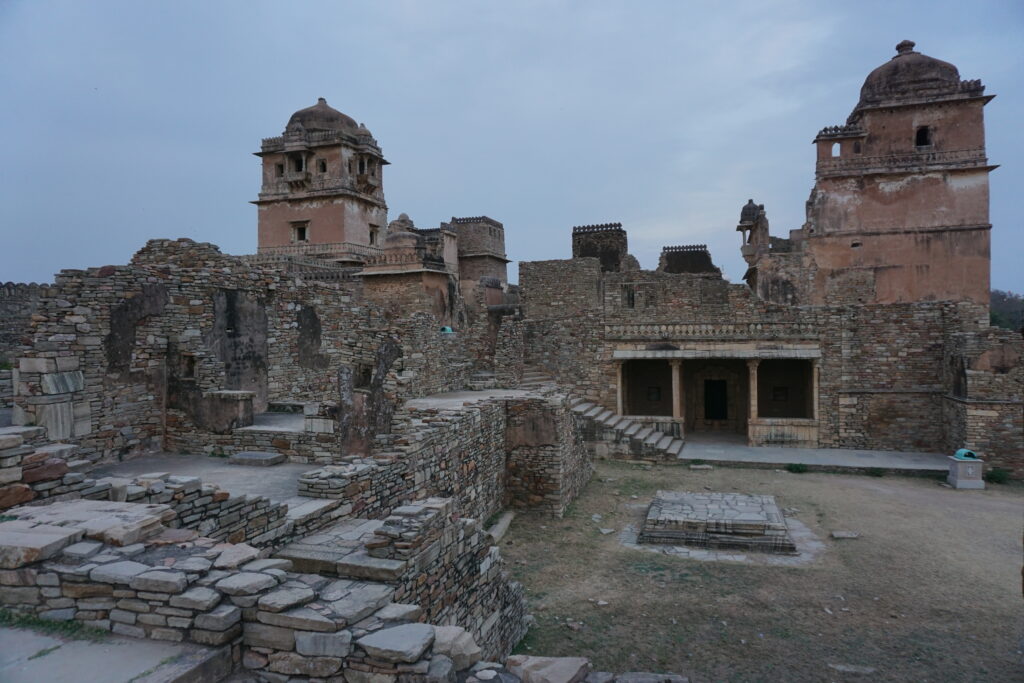
Chittorgarh was my last destination of this trip. The next day I rode back to Udaipur and boarded the flight back to Bangalore. From temples to mountains, from palaces to forests, and from lakes to forts, this trip was the most diverse trip I had taken so far. The colorful land of Rajasthan had given me an enriching experience. As my flight took off, I was already planning my next trip to Rangilo Rajasthan.
The End
